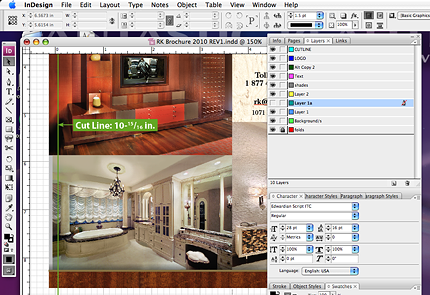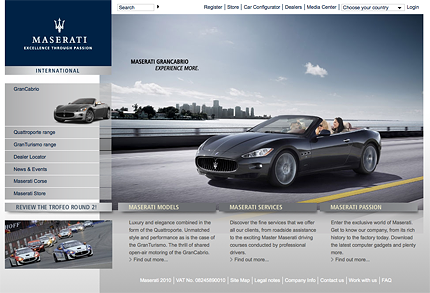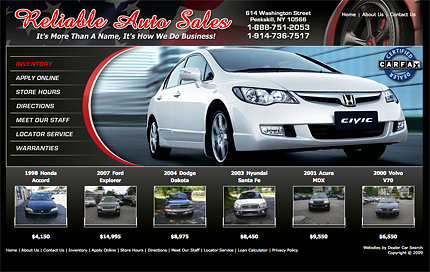
For openers, I have been reminded that if I want to keep people’s attention with a blog, I actually have to POST, at least more regularly than I have been doing. The current occasion is the Hudson Valley Business Edge 2010 Conference, an event that I highly recommend if you’re in the region and work in a small to medium size business, especially as an Owner, Proprietor or Principal. The presenters are all very knowledgeable, and the content is presented in a very dense manner, in short, accessible sessions. Last year I presented on “When Do You Need a Design Pro?”, and hope to do so again on subjects graphic. But to the point, while I fairly recently posted back on June 7th, the one before was March 20th.
I have been busy, hence the lean posting. So this time around I’ll talk about a recent client experience.
This is a long term client that I have been working with for many years. I’ve built and rebuilt his website, will do it again soon. This time around I was updating his brochure. This is a fairly standard tri-fold brochure, a pretty common and useful staple of business marketing. This item is usually not a terrific chore if you have a focused client, and their graphic identity is already in place. Typically brochures are put together after logo design and identity projects are complete. But what happens when your client is perhaps over focused
The short answer is: 63 design comps, seven candidate “final” versions. Three rounds of pre-press, PDFs and AAs. Hundreds of photo retouches and composites. 2.4 gigabytes of data. And sent the press proofs back to press… twice. What on earth happened here?
I am not going to say what this project cost, but it blew well past my initial estimate by several multiples. Suffice to say that the sum was either impressive or embarrassing, depending on which side of the checkbook you’re looking from. I accept installments. I am not railing against my client, who I actually think quite highly of, and is a stone cold expert , a top craftsman and designer in in the luxury fabrication market he makes his profession. But yes, the project was unusual in the scope, number and and detail of the multiple rounds of revisions.
I suspect some of the Design Pros out there might be wondering, when did I lose control of the Design Process? But I don’t think I did. I did keep him appraised that the meter was indeed running as the revisions mounted up, and tried to wave the yellow flag. I was working hourly, which most freelancers prefer, as it keeps us honest and clients only pay for work actually done. I do grok that most clients would rather have flat fees, to budget accurately. So I try to make my estimates and quotes reasonably accurate. But typically I expect to turn a brochure project around on 2-3 initial designs and 2-4 rounds of revisions and tweaks including proofreading. On a flat fee project, unless you detail revision charges, you can get killed here. This can become a nightmare on an open ended project like a web site were the design and production process is much more organic, and the final product can moprh a lot till the project is completed.
Of course, some say web sites are never actually finished, but that’s a separate rant.
But my client wanted, well, exactly what he wanted. After fine tuning many details of design and copy to create an extremely crisp and tight showcase for his products, it was on to the product photography. It was critically important to him that his product photography be as close to perfect as humanly possible to image, process, color correct, clean, retouch and composite.
Most folk would confront the mounting hours and costs and get to a point where a project is “good enough” and sign off on it. After all, some details are so minute that most readers will not notice a lot of very tiny glitches. Obsessive revison is just not cost effective for the average small … or even moderately large business. Mind you, when Ferrari or Maseratti does a brochure, it’s a 16 page super glossy piece with giant full bleed photos and tiny blocks of copy on stock just short of cardboard and every photo is glistening perfection. But when a single car costs more than my house, “price is no object” in selling them has a certain resonance. A used car dealership will pour all that copy into a tri-fold with a stack of digicam photos one of their salesman took.
It’s all a matter of perceived value, versus the actual cost of the work.
So how much is enough?
Mind you, of the over 50 hours on the project, over half of it was spent in Photoshop doing photo work. This is in addition to the work the photographer did on most of the images as well. By the way, this was not Joe in the Mail Room with the boss’s pocket digicam; this is a very good pro photographer who’s work is very sharp. But every detail had to be perfect. But I did call him on cleaning up the color of a reflections on a detail no wider than four benday dots. I also found myself nudging parallax errors picked up in a wide angle lens that I could not discern on a 20” monitor without a layer of guidelines.
To note the level of detail we persued, one tweak was both revising the cropping and placement of photos to account for the 1/16” of additional trim (see image) that some printers nick off the fold-in panel so that the borchure folds neatly. (geek alert: not always the case, some printers use very slightly assymetrical folds to allow for a sightly narrower folk-in panel, depending on their machinery.) In most cases this would not a big deal, but there were details in the product photos that my client felt were critical to preserve, and worth the time and expense to address. We also did some furher adjusting in the photos as well to allow for more bleed.


To return to the car analogy. When Ferrari or Maseratti publish anything from brochures to bar napkins to their annual report, their entire brand and image rides on it, For that market, they make sure every bit of their marketing material measures up to the same lofty standards as their automobiles. For the Used Car Dealership, the owner’s image and reputation would be based on being a perceived as offering square deals and good value, especially considering he is selling products he was not involved in designing or producing. So very high end marketing materials might actually hurt, and cause the business to be perceived as overly expensive. Most Used Care Dealers want to been seen as trustworthy “regular guys”, literally “one of us.” You know, the folks who are not buying Ferraris or Maserattis.
Is all of this “apple polishing” worth it?
To my client, he expressed that it was. In fact he felt it was critical. At the level of his market and product, if the results of all this exacting refinement produce just ONE more customer for him, he will be ahead. In essence, he held me, the photographer and the printer to the same standard of demanding craftsmanship that he applies to his own work. And I’ll have to say that it’s very good work, among my very best this year.
Will that level of craftsmanship and exactitude be worth it for your project? I can only say that I approach every project with an open mind and a professional attitude, evaluating each project and then providing my best professional opinion on producing it. When a client has a clear idea of their needs and message, it makes my job a lot easier. Going high end on a job also raises my game to that higher level, and its often a pleasure to do really sharp work. Ideally, a project’s costs should match both the budget and the message. Some things might call for “fast and dirty” so long as things are neat and professional – and proofread, they’re ready to go. Other mission-critical projects might very well call for numerous and detailed review, revision, and tweaking to a high level of polish.
How far you want to go is entirely up to you.
Have you ever considered creating an ebook or guest authoring
on other sites? I have a blog based on the same topics you discuss and would really like to have you share some stories/information.
I know my visitors would enjoy your work.
If you are even remotely interested, feel free to send me an e
mail.
Sweet blog! I found it while browsing on Yahoo News.
Do you have any tips on how to get listed in Yahoo News?
I’ve been trying for a while but I never seem to get
there! Cheers
Good way of explaining, and pleasant post to get facts concerning
my presentation topic, which i am going to deliver in institution of higher education.
Here is my blog post – american dental association Elk Grove